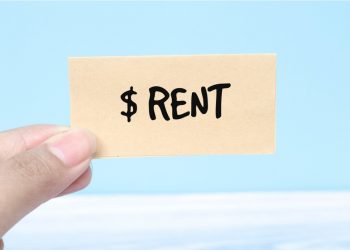RISMEDIA, August 6, 2010—The National Association of REALTORS® (NAR’s) Green REsource Council teamed up with a number of green industry groups and real estate associations earlier this year and developed guidelines and a tool kit to help local MLSs green their systems.
“This tool kit came about because of a need in the marketplace. Builders, appraisers and REALTORS® have been asking for it,” said Medina, director of the National Association of REALTORS’® Green Designation. “It’s not a mandate for MLSs, but a free tool for those that are preparing to go through the process of adding green features to their MLS.” The toolkit was a collaborative effort with numerous organizations and an industry-wide initiative, not a solo act by NAR’s Green REsource Council.
After all, a green MLS benefits everyone.
With a green MLS, consumers and real estate agents looking for green homes, can locate properties with green features quickly and efficiently because sustainable features are highlighted. Similarly, listing agents can now accurately represent a property with green features, while lenders and appraisers can use a green MLS to better value properties with green features.
In addition, builders have an incentive to build green when they see that green homes are in demand and are selling faster than traditionally-built homes. According to a study by Carson Matthews & Carol Cahill on certified green home statistics based on First MLS (FMLS) information in 2009, Atlanta homes certified as EarthCraft, LEED® for Homes, NAHB Green or ENERGY STAR® properties sold 31 days faster and closer to list price than traditionally built homes. Without a green MLS, such as Atlanta’s First MLS (FMLS), tracking such data might not have been possible.
The experience is similar in Portland, Oregon, where the green MLS indicates that green homes sold faster and for higher prices than their non-green counterparts. This information came to light through an area study, “Certified Home Performance: Assessing the Market Impacts of Third Party Certification on Residential Properties (May, 2009),” which examined homes in the greater Portland and Seattle areas. “A green MLS creates a history and track record that is important to consumers, real estate agents, appraisers and builders,” said Medina.
For those committed to green real estate, a green MLS can help in marketing and selling sustainable properties and making a case for the value of green.
In a recent Webinar hosted by the Green REsource Council, Medina walked participants through highlights of the toolkit, including:
Case studies – Write-ups of various ways that MLSs have gone green and the challenges that participants encountered. “The common element among them all was that real estate agents were the ones who spearheaded the effort,” said Medina. He pointed out that those with the GREEN designation can be the ones in a community to organize an effort to green the MLS.
Snapshot of the Green Home Industry – Statistics, along with questions and answers about green homes.
MLS with Green Fields – The social and economic demand for greater efficiency and the ways that a green MLS benefits everyone involved in a home transaction.
Recommendations for a Successful Green Program – Strategies for establishing goals and objectives for greening the MLS, assembling a team and cooperating with other green organizations and professionals.
Green Home Certifications – Incorporating green home certification programs, such as LEED® for Homes, ENERGY STAR® and NAHB Green, the legal concerns that can ensue after any change to the MLS data. It also illustrates how to best deploy and promote a green MLS and educate users.
Recommendations for Data Entry Forms – Various strategies for representing green in an MLS in ways that make it simple for users to search for specific efficiencies. It also makes suggestions about avoiding the legal pitfalls and risks of overstating a home’s greenness and avoiding green washing.
Green MLS Data Entry Form Examples – Specific ways to express green features in the MLS. Examples include intermingling green attributes with other attributes and using color to highlight green features.
Medina also pointed out that residential real estate is changing, and though short sales and foreclosures are dominating many markets, green will gain prominence again soon and emerge as a real estate trend. It is beneficial for green practitioners to get involved in any MLS greening efforts that emerge in their area. After all, those who earn training and education through NAR’s Green Designation may have a leg up on the competition when this change happens.
One Chicago practitioner who has been involved in greening the Chicago MLS and who serves on various green committees and task forces can see the benefit of this program. “He’s created a market niche for himself and now is one of the go-to green guys in the city. That exposure and recognition will translate to more business,” said Medina.
Upon its launch, all MLSs across the nation received an e-copy of this tool kit. The Green Resource Council sent e-copies of the tool kit to MLS programs across the country. It also uses NAR’s Green Designees to communicate the benefits of adding green features to an MLS. Real estate agents are not the only professionals pushing for the change. This much anticipated industry guideline has led several MLS boards to add this important issue to their 2010 agenda.
“We believe it to be only a matter of time until we see significant regional and national feedback on the addition of green fields to the MLS,” Medina says.
For a complete list of the associations and organizations involved in the development of the tool kit, visit GreenTheMLS.org. The full tool kit is available to peruse online at www.GreenTheMLS.org.
The Green REsource Council awards NAR’s Green Designation, which provides real estate professionals with knowledge and awareness of green building principles applied in residences, commercial properties, developments, and communities so that they can help consumers in purchasing, retrofitting, and operating green properties. The courses encourage the real estate professional to be an advocate for green principles in the design and use of homes and commercial buildings and a positive force for creating sustainable communities.
For more information, visit GreenREsourceCouncil.org.










